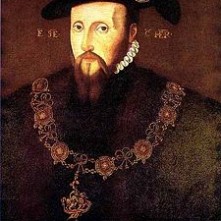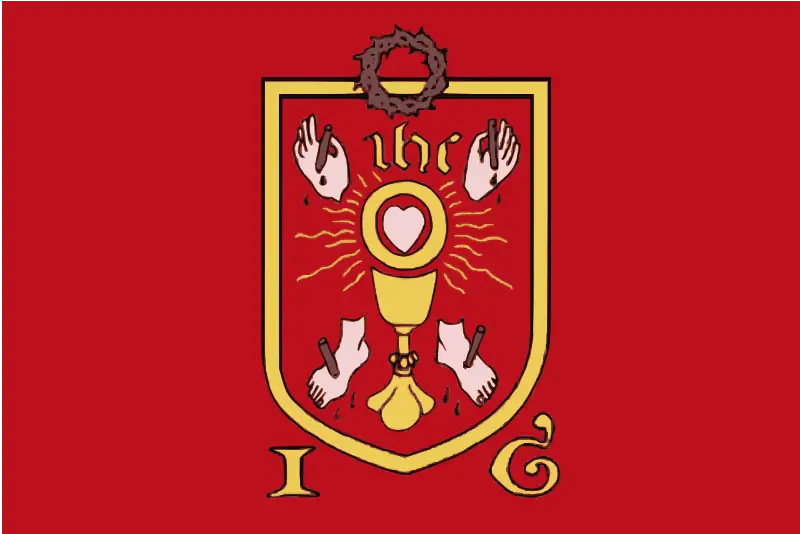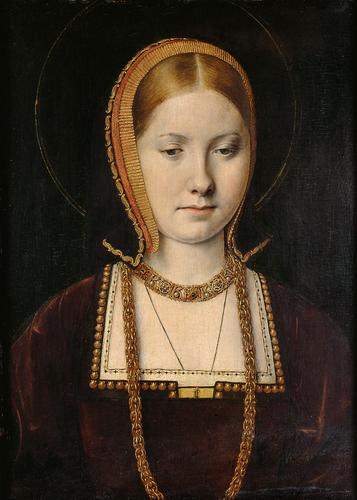1 October
1500 – Death of John Alc*ck, Bishop of Ely, scholar and Royal Tutor, at Wisbech Castle. He was buried at Ely Cathedral, in the chantry chapel he had designed. Alc*ck had acted as tutor to Prince Edward, son of Edward IV, and had also been president of the Prince's Council at Ludlow. He was also Henry VII's first Chancellor and opened his first Parliament.
1505 – Death of Sir Henry Colet, merchant and Lord Mayor of London, at Stepney. He was buried there.
1526 – Birth of Dorothy Stafford, Lady Stafford, daughter of Henry Stafford, 10th Baron Stafford, and his wife, Ursula (née Pole). Dorothy married Sir William Stafford, widower of Mary Boleyn, in 1545. She served Elizabeth I as a gentlewoman of the Privy Chamber.
1553 - Mary I was crowned Queen at Westminster Abbey by Stephen Gardiner, the Bishop of Winchester. Click here to read more.
2 October
1452 - Richard III, the last Plantagenet king, was born at Fotheringhay Castle, Northamptonshire. Click here to read more.
1501 – Catherine of Aragon arrived in England, landing at Plymouth in Devon. She had come to England to marry Prince Arthur, the heir to the throne of England.
1514 – Mary Tudor, sister of Henry VIII, set off from Dover to sail to France to marry King Louis XII. She was eighteen and he was fifty-two, and not in the best of health. They married on 9th October 1514, but the marriage was short-lived as Louis died in January 1515. Mary went on to marry Charles Brandon, the Duke of Suffolk, on the 3rd March 1515.
1518 – Treaty of London – Cardinal Wolsey’s treaty of “Universal” peace between France and England was signed.
1521 – Pope Leo X was given Henry VIII’s Assertio septem sacramentorum or “Defence of the Seven Sacraments” in Rome. This work led to Henry VIII being proclaimed Fidei Defensor or “Defender of the Faith”.
1528 – Publication of William Tyndale’s “The Obedience of the Christian Man and How Christian Rulers Ought to Govern”.
1536 – Start of the Lincolnshire Rising, the beginning of the Pilgrimage of Grace. It was sparked off by a sermon at evensong on the 1st October at St James’s Church, Louth, and by a visitation from a registrar on 2nd October.
3 October
1518 - Cardinal Wolsey sang a mass to Henry VIII and the French ambassadors at St Paul's Cathedral in celebration of the treaty agreed between the two countries the previous day. The King and ambassadors also took oaths to the treaty. Click here to read more.
1559 – Death of Sir William Fitzwilliam, Gentleman of Edward VI's Privy Chamber. He was buried in St George's Chapel, Windsor Castle.
1584 – Death of Sir Gilbert Dethick, herald, Garter Principal King of Arms and diplomat, in London. He was laid to rest in the church of St Benet Paul's Wharf. Dethick's offices included Hampnes Pursuivant of Arms Extraordinary (1536), Rouge Croix Pursuivant of Arms in Ordinary (1540), Richmond Herald of Arms in Ordinary (1540), Norroy King of Arms (1547) and Garter Principal King of Arms (1550).
4 October
1507 – Birth of Sir Francis Bigod, leader of Bigod's Rebellion, at Seaton, Hinderwell, Yorkshire. Bigod led an uprising in Beverley, Yorkshire, in January 1537, following the Pilgrimage of Grace, and was executed in June 1537.
1531 – Baptism of Henry Stanley, 4th Earl of Derby, at Lathom House, Lancashire. He was the eldest son of Edward Stanley, 3rd Earl of Derby, and his wife, Dorothy (née Howard). Derby served Elizabeth I as an Ambassador, Privy Councillor and Lord High Steward at the trial of Philip Howard, Earl of Arundel and Surrey.
1536 - There was trouble in Horncastle, Lincolnshire. This was part of what we know as the Lincolnshire Rising which, in turn, was part of the Pilgrimage of Grace rebellion. Dr Raynes, the chancellor of the Bishop of Lincoln, was killed by the rebels, as was Thomas Wulcey (or Wolsey), one of Cromwell’s men.
1539 – Signing of the marriage treaty between Henry VIII and Anne of Cleves.
1556 – John Cheke made a public recantation of his Protestant faith in front of Queen Mary I.
1581 – Death of Henry Wriothesley, 2nd Earl of Southampton, at Itchel in Hampshire. He was buried at Titchfield.
5 October
1518 – Formal betrothal of Princess Mary, daughter of Henry VIII and Catherine of Aragon, and the Dauphin of France.
1528 – Death of Richard Foxe, Bishop of Winchester, founder of Corpus Christi College, Oxford, and Lord Privy Seal in the reign of Henry VII and at the beginning of Henry VIII's.
1549 – Edward Seymour, Protector Somerset, ordered a gathering of men at Hampton Court Palace, where he was lodged with the young Edward VI due to tensions mounting between Somerset and John Dudley, Earl of Warwick. Click here to read more.
1553 – Mary I's first Parliament. Click here to read more.
1555 – Death of Edward Wotton, physician and naturalist. He was buried in St Alban Church, Cheapside, London. Wotton is known for starting the study of zoology and his works included De differentiis animalium libri decem which he dedicated to Edward VI.
1598 – Burial of Thomas Crooke, Church of England clergyman, at St Mary Woolchurch in the chancel.
1605 – Death of Sir Edward Lewkenor, politician and Puritan patron, at Denham Hall from smallpox. He was laid to rest at Denham church.
6 October
1510 – Birth of John Caius, theological scholar, Royal Physician and founder of Gonville and Caius College, Cambridge, at Norwich. He was the son of Robert Caius and his wife, Alice (née Wode). Caius studied medicine at Padua and was physician to Edward VI, Mary I and Elizabeth I.
1536 - The traditional date given for the execution of reformer, scholar and Bible translator, William Tyndale. Tyndale, whose works include “The Obedience of a Christian Man” (a book Anne Boleyn shared with Henry VIII), had incurred the wrath of Henry VIII after the publication of his “The Practyse of Prelates”, in which he opposed Henry VIII’s planned annulment from Catherine of Aragon.
1557 – Death of John Capon (also known as John Salcot), former Benedictine monk and Bishop of Salisbury, probably from influenza. He was buried in the choir at Salisbury Cathedral. He appeared to have reformist leanings in the reigns of Henry VIII and Edward VI, but became a conservative Catholic again in Mary I's reign, and was involved in the examination of those deemed to be heretics.
7 October
1506 – Death of Sir Thomas Frowyk, Judge and Chief Justice of the Common Pleas. He was buried with his first wife, Joan, at Finchley Parish Church in Middlesex, on the north side of the chancel.
1533 – Death of Sir John Scott, soldier. Scott served as a Senior Captain in the army sent to the Low Countries in 1511 to support Margaret of Austria, and was rewarded for his service by a knighthood. He also served in France in 1514 and 1523.
1571 - The Battle of Lepanto between the Holy League, led by Don Juan of Austria, and the Ottoman Empire. The Holy League were victorious. Click here to read more.
1577 – Death of George Gascoigne, author, poet, courtier and soldier, in Stamford, Lincolnshire. He was buried there, at St Mary's parish church. He is listed as one of the most important Tudor poets, along with the likes of Sir Thomas Wyatt, Henry Howard, Earl of Surrey, and Philip Sidney. His works included “A Discourse of the Adventures of Master FJ”, “The Supposes”, “A Hundredth Sundry Flowres...” and “The Posies of George Gascoigne, Esquire”.
1589 – Death of William Hawkins, merchant and sea captain, at Deptford. He was buried at St Nicholas's Church. In 1580, Hawkins led an expedition to the Caribbean, returning to England with treasure and sugar. In 1588, he was involved in leading seven ships from Plymouth against the Spanish Armada.








Leave a Reply